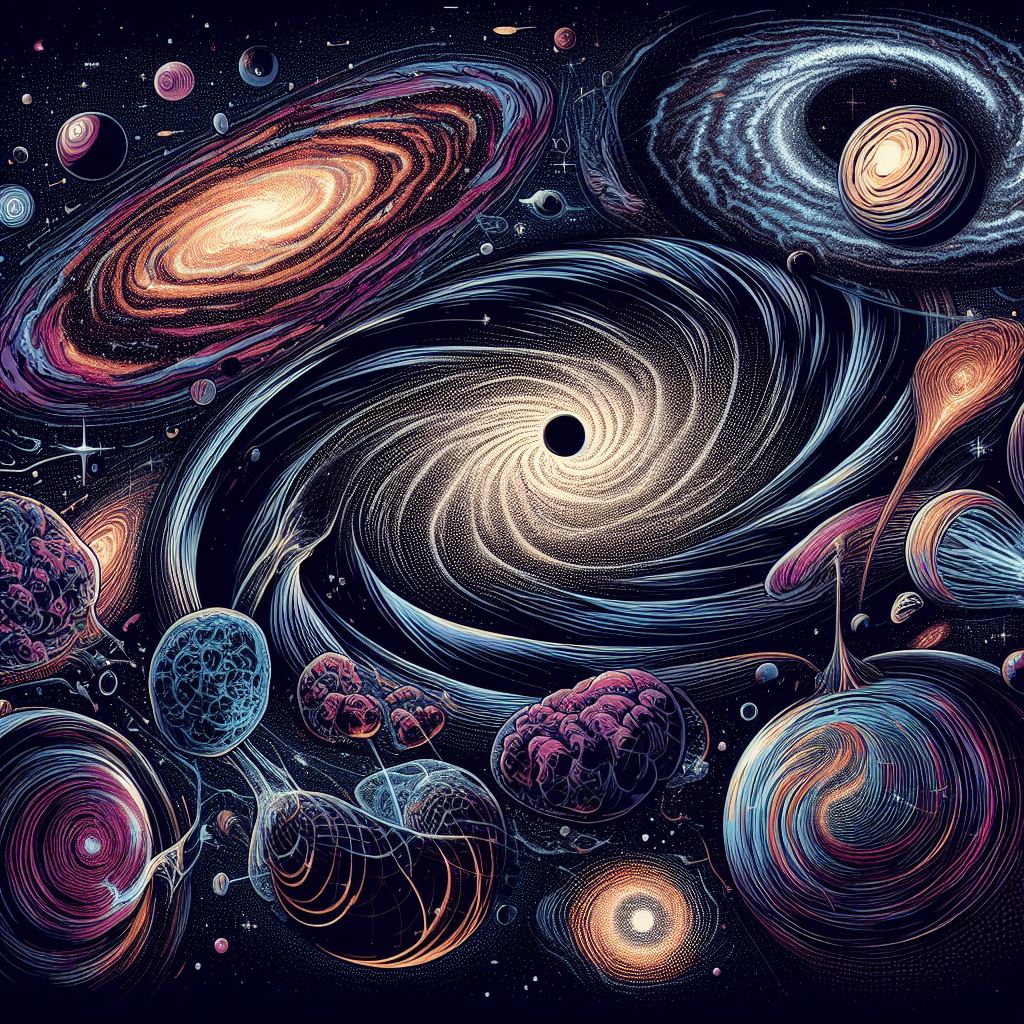
Unraveling the Universe: Unveiling its Astounding Secrets
The universe, or cosmos, has always been a source of fascination. With every discovery, a myriad of questions arise, pushing us further into the realms of the unknown. As we delve into the mysteries of the universe, from the enigma of dark matter to the wonders of cosmic inflation, we are continually astounded by what we uncover.
Dark Matter and Dark Energy: The Invisible Players
What are They?
-
Dark Matter: Although it doesn't emit, absorb, or reflect light, dark matter exerts gravitational forces, making its presence known. It's believed to make up about 27% of the universe.
-
Dark Energy: Even more elusive than dark matter, dark energy is the mysterious force that's pushing the universe apart at an accelerated rate. Currently, it's thought to comprise approximately 68% of the universe.
Recent research from journals like Nature Astronomy and reports from NASA suggest that these two enigmatic entities play a significant role in the universe's structure and its future. However, their exact nature remains one of the most significant challenges in cosmology.
"Dark matter and dark energy are shadows that have puzzled scientists for decades." - Neil deGrasse Tyson.
Recent Discoveries and Implications
Recent telescope advancements have given scientists the tools to better detect the effects of dark matter and dark energy. One paradigm shift in the field has been the understanding that dark matter isn't just "out there" in the vast spaces between galaxies. It's right here, within our own Milky Way.
The Role of Black Holes in the Universe's Evolution
Black holes, once thought of as mere celestial oddities, are now understood to be fundamental to the universe's very fabric. Their intense gravitational pull affects the formation of galaxies, stars, and potentially even the fabric of spacetime itself.
A Recent Case Study: The First Black Hole Image
In 2019, a global collaboration called the Event Horizon Telescope project unveiled the first-ever image of a black hole, marking a monumental achievement in astrophysics. This image provided direct evidence of black holes and their vast influence on the celestial realm.
Exploring Cosmic Inflation and the Big Bang
One of the most groundbreaking theories in cosmology is the concept of cosmic inflation. Simply put, it's the idea that, a mere fraction of a second after the big bang, the universe expanded at a speed faster than light.
After the Bang
Following this rapid inflation, the universe continued to expand, albeit at a much slower pace. This period saw the formation of galaxies, stars, and planets. Cosmic inflation helps explain why distant parts of the universe look so similar, despite not being in contact with one another.
Brian Greene, in his best-selling book, articulates, "Cosmic inflation is the dynamite behind the big bang."
Navigating the Nature and Shapes of Galaxies
The universe is teeming with galaxies of various sizes, shapes, and colors. These vast collections of stars, gas, dust, and dark matter evolve over billions of years.
Types of Galaxies:
- Spiral Galaxies - like our Milky Way, have a flat spinning disk with a central bulge surrounded by spiral arms.
- Elliptical Galaxies - range from nearly circular to elongated shapes.
- Irregular Galaxies - lack a regular shape or structure.
Recent discoveries have unveiled galaxies that challenge our previous classifications, suggesting a dynamic, ever-evolving universe.
Notable Discoveries and Paradigm Shifts
The past decade has seen remarkable breakthroughs in astrophysics. For instance, the detection of gravitational waves by LIGO (Laser Interferometer Gravitational-Wave Observatory) has opened a new way of observing the cosmos. These waves, ripples in spacetime, have confirmed key predictions of Einstein's theory of general relativity.
Another groundbreaking discovery is the potential identification of a new type of particle, which could provide answers to the mysteries of dark matter.
In Conclusion
For students of astrophysics, educators, and the general public alike, the universe continues to offer a wealth of knowledge and wonder. As we unravel its secrets, we're reminded of the words of Stephen Hawking: "The universe doesn't allow perfection." Our quest for understanding is endless, but with each answer, we're a step closer to comprehending our celestial home.
To further explore these topics, consider diving into journals, websites of space agencies, and works of prominent astrophysicists. The cosmos awaits your curiosity.
Also Like to Read:
Exploring the Multiverse: Beyond Our Known Universe
Science

